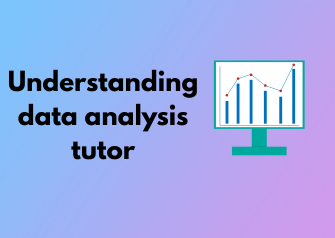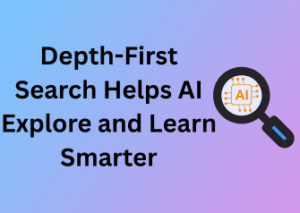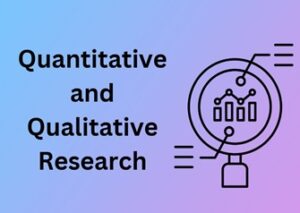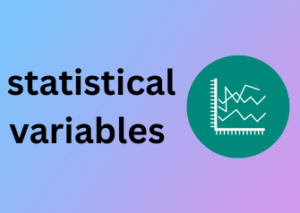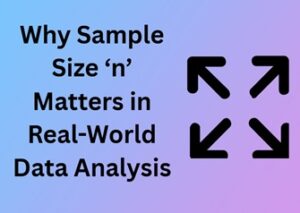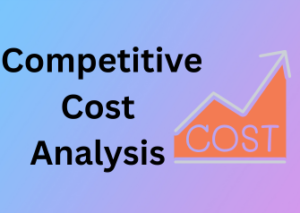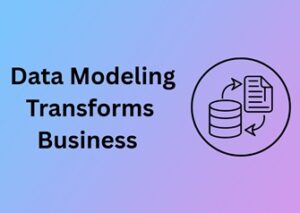In today’s fast-paced, data-driven world, the role of a data analysis tutor has never been more significant. With businesses, governments, and even small organizations embracing the power of analytics, having someone to demystify its complexities is not just helpful—it’s a game-changer. But what exactly does such a tutor do? And more importantly, why are they so essential in modern education?
The Guide Through the Data Maze
Imagine navigating through a dense, confusing forest with no map or GPS. That’s often how students feel when stepping into the world of data analysis for the first time. A talented tutor doesn’t just offer a map—they walk alongside the student, ensuring they understand areas like data cleaning, visualization, and interpretation. From helping students decode spreadsheets to introducing powerful tools like Python, R, or Excel, tutors make intimidating concepts approachable.
More Than Just Technical Skills
Let’s be honest—data analysis isn’t just about crunching numbers. It’s about knowing what those numbers mean and how they fit into larger goals. A great tutor emphasizes the value of critical thinking, teaching students not only to look at the “what” but also the “why” behind the figures. In doing so, they instill confidence and empower students to tackle challenges head-on, whether that means solving a classroom problem or addressing a workplace issue.
Building the Foundation for Lifelong Learning
If done right, the role of a data analysis tutor stretches far beyond completing an assignment. They play a crucial part in nurturing curiosity and a growth mindset. By encouraging students to ask better questions—not just “How do I do this?” but also “Why is this important?”—tutors cement a love for learning. And in a world where technology and methods change quickly, this ability to adapt and grow is arguably their most valuable takeaway.
Making Data Analysis Relatable
Let’s admit something—data analysis can sometimes sound like a dry topic for those who are new to it. But a skilled tutor knows how to demystify the subject by tying it to real-life examples. Whether it’s analyzing sports statistics, tracking social media trends, or even breaking down the performance of their favorite video game, these connections make the subject more exciting, relevant, and understandable.
Why Do Students Need This Guidance?
While online courses and textbooks are incredible resources, they can’t provide the same personalized support that a tutor can. Every student learns differently—where one might struggle with data visualization, another might need more practice with coding syntax. A tutor can identify these unique challenges and adjust their approach to suit the individual. It’s a level of customization that impersonal resources can’t replicate.
Key Skills Every Student Should Learn From a Data Analysis Tutor
When it comes to data analysis, it’s not just about crunching numbers or cleverly using software to make predictions. A data analysis tutor has a crucial role in empowering students with fundamental skills that go far beyond formulas and spreadsheets. But what are these key skills that can turn a student into a confident data analyst?
1. Understanding Data Basics
The foundation of any great data analyst starts with grasping the basics: what data is, where it comes from, and why it matters. A great tutor will patiently guide students in deciphering data sources, whether it’s from an industry report or a customer survey, and help them understand key concepts like data types (quantitative vs. qualitative) and data dimensions. These principles may seem introductory, but they provide the backbone for more complex analysis down the line.
2. Developing Statistical Literacy
Statistics can be intimidating—but a good tutor makes it approachable. Beyond memorizing formulas, students need to learn how to interpret results. For example, what does a p-value really mean in everyday language? How should you evaluate whether your sample size is sufficient? Tutors who translate these concepts into relatable examples help their students see the power of statistics to uncover stories within numbers.
3. Mastering Data Cleaning and Preprocessing
Here’s a secret every experienced analyst knows: the majority of time spent on data analysis isn’t on glamorous charts or models—it’s on cleaning messy data. A skilled tutor emphasizes the importance of identifying errors, dealing with missing values, and ensuring datasets are ready for analysis. Students who understand this step also learn patience, an underrated yet essential quality in analytics!
4. Visualizing Data Effectively
There’s a saying, “A good chart speaks a thousand words.” A data analysis tutor teaches students how to create clear, insightful visualizations that explain complex findings at a glance. This involves learning the right type of chart for each dataset (e.g., when to use a scatter plot vs. a bar chart) and avoiding misleading visualizations that might confuse rather than clarify.
5. Critical Thinking and Problem Solving
A cornerstone of any data-related role is the ability to ask the right questions and then use data to solve them. Tutors encourage students to think critically—not just about “how” to analyze data, but also “why” they’re doing so and “what” it ultimately means. Framing problems the right way is a transformative skill that separates great analysts from the rest of the crowd.
6. Communication and Storytelling
All the insights in the world won’t matter if you can’t communicate them effectively. The ability to translate numbers into meaningful, real-world narratives is a skill every tutor should help students cultivate. Whether it’s crafting a concise executive summary or presenting findings in a meeting, good communication transforms data into action.
7. Introduction to Key Tools
Whether it’s Excel, Python, R, or visualization platforms like Tableau, familiarity with essential tools is vital. A tutor can demystify these tools, showing students how to use them efficiently without feeling overwhelmed. While the focus shouldn’t solely be on software, these tools often act as a gateway to solving real-world data problems.
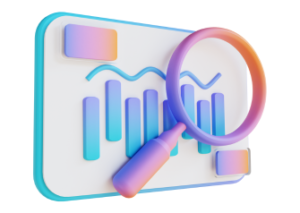
Practical Applications: Real-World Scenarios Where Data Analysis Matters
Data analysis might sound like something reserved for scientists in lab coats or tech geniuses armed with complex algorithms, but in reality, it plays a crucial role in everyday life. The power of analyzing and interpreting data affects nearly every industry, and understanding how it applies in the real world makes it easier to appreciate its importance. Let’s dive into some key areas where data analysis makes a difference—and why it’s worth learning.
1. Enhancing Business Strategies
Picture this: a company wants to launch a new product. How will they ensure it’s a success? Cue data analysis! Businesses rely on analyzing sales trends, customer demographics, and competitive pricing strategies to make informed decisions. From identifying which product features customers prefer to understanding market trends, data is the backbone of any successful launch.
For students aiming to work in business or marketing, understanding how to collect and interpret consumer data is an essential skill. Tools like Excel for basic analysis or Python for deeper insights are widely used here. The next time you watch a company hit a home run with a popular product, know that data was secretly behind the scenes pulling the strings!
2. Revolutionizing Healthcare
In healthcare settings, analyzing data saves lives. Medical professionals use predictive models to identify disease outbreaks, measure the effectiveness of treatments, or even personalize medicine based on a patient’s genetic data. In fact, during the COVID-19 pandemic, experts relied on data analysis to track infection rates, monitor vaccine efficacy, and develop safety protocols.
For aspiring students in medicine or biology, mastering data analytics can be transformative. Learning tools like R or statistical software allows them to draw meaningful insights from complex medical data. Imagine uncovering trends that could help an entire community—it’s both empowering and life-changing.
3. Optimizing Supply Chains
Ever wondered how your favorite online store restocks products just in time or how they manage to deliver your order in two days? Behind the scenes, data analysis ensures supply chain efficiency. From forecasting demands to locating bottlenecks, businesses like Amazon rely on powerful analytical models to fine-tune logistics. This minimizes delays, saves costs, and keeps customers happy.
If you’re looking at careers in logistics, engineering, or operations research, understanding predictive modeling and algorithms is indispensable. Learning these real-world applications from a data analysis tutor could be the edge you need to make an impact in global supply chain management.
4. Shaping Entertainment
Think about your favorite streaming platform like Netflix or Spotify. How does it always seem to recommend just the right shows, songs, or playlists? That’s data analysis at work! Algorithms parse through user preferences, viewing habits, and ratings to deliver a personalized experience. This level of customization has not only revolutionized entertainment but also altered how we consume media.
For students interested in media and technology, understanding recommendation systems is a must. Learning concepts like machine learning and collaborative filtering from data analysis experts can lead to exciting career opportunities in media tech.
5. Advancing Sustainability
Finally, let’s talk about the planet. Data analysis plays a crucial role in addressing environmental challenges. Governments and organizations use data to track climate change, monitor pollution levels, and even improve renewable energy efficiency. For instance, analyzing data from weather patterns helps optimize wind turbine placements or solar panel capacity in different regions.
If sustainability is your passion, skills in data visualization and big data can empower you to make meaningful contributions. Imagine creating models that influence environmental policies or designing data-driven solutions to reduce carbon footprints!
Choosing the Right Tools and Techniques With Expert Guidance

Ever feel overwhelmed by the sheer number of tools and techniques out there in the data analysis world? Don’t worry—you’re not alone. With the rapid growth of technology and data-driven decision-making, the variety of software, frameworks, and methodologies available can be daunting even for professionals. The good news? With expert guidance, navigating this complex landscape doesn’t have to be a solo mission. Let’s dive into how a data analysis tutor can help you make sense of it all and guide you toward the right tools and techniques.
Why Choosing the Right Tools Matters
Think of data analysis like building a house. The tools you choose are like the hammer, nails, and blueprint that determine the quality and safety of the final structure. Sure, you could try to use a screwdriver where a hammer is needed, but—spoiler alert—it’s not going to go well. Similarly, selecting the wrong software or technique for your data project might leave you frustrated, stuck, or even with inaccurate results. By working with an experienced tutor, you can ensure you’re working smarter, not harder.
Breaking Down the Options
A good data analysis tutor helps you wade through the overwhelming number of options to find the tools and techniques that suit your specific goals. Here’s an overview of what that process might look like:
- Software Selection: Should you go with Excel for simplicity, Python for flexibility, or R for statistical power? An experienced tutor evaluates your proficiency level, project requirements, and personal preferences before offering tailored advice.
- Data Visualization Tools: Sometimes, understanding data means seeing it in action. From Tableau to Power BI to Matplotlib, selecting the right visualization tool can make your insights crystal-clear (and impress your audience). A tutor can teach you how to use these tools effectively.
- Techniques: Whether it’s regression analysis, clustering, or predictive modeling, knowing when to apply which technique is crucial. Your tutor can help explain the strengths and limitations of these methods so you’re making informed choices.
Learning By Doing: Hands-On Experience
One of the most valuable aspects of having a mentor is the ability to learn through hands-on experience. A great tutor doesn’t just talk about tools; they show you how to use them in real-world scenarios. For instance, analyzing a dataset from Kaggle or building a dashboard for a mock project are hands-on experiences that cement what you’ve learned.
The Role of Guidance: Avoiding Pitfalls
Let’s face it: learning data analysis can sometimes feel like decoding an alien language. But a good tutor simplifies the process and helps you avoid common mistakes, like overfitting a model or misinterpreting data visualizations. They’ll also teach you time-saving tips such as automating repetitive tasks or troubleshooting buggy code. It’s like having a GPS for your data journey!
Iterative Learning With Feedback
Another key benefit of expert guidance is the feedback loop. Maybe you’re struggling to clean messy data, or your chosen analysis isn’t yielding meaningful patterns. A skilled tutor provides constructive feedback on your work, showing you better alternatives while building your confidence and independence.
Bridging the Gap Between Statistics and Actionable Insights
Let’s talk about one of the most exciting aspects of data analysis: transforming numbers into understanding—and then using that understanding to make things happen! While statistics can feel abstract and, frankly, a little intimidating at first, the true magic lies in connecting the dots between raw data and decisions that create measurable results. So, how do we build this bridge? Let me walk you through it step by step, with tips and insights along the way.
Why Is Bridging This Gap So Important?
Think about it for a second. It’s one thing to know how to calculate a mean, median, or regression coefficient, but what does that actually mean in real life? Without interpretation and application, even the most sophisticated statistical models are useless. The goal is to get from “what the data says” to “what we should do about it.” Whether you’re analyzing sales trends, optimizing marketing campaigns, or understanding customer behavior, bridging the gap between statistical results and actionable insights is a vital skill for any aspiring data analyst.
Turning Numbers Into Narratives
At the heart of this bridge is storytelling. Let’s face it: statistics can come across as dry or overly technical, particularly for non-technical audiences. A good data analysis tutor helps students learn how to present their findings as a compelling narrative. Imagine the impact of saying, “Our company had a 15% decrease in customer churn last quarter because of a more personalized email strategy” instead of racking your audience’s brain with a bunch of scatterplots. The data provides the evidence, but it’s how you tell the story that drives decisions.
Asking the Right Questions
Here’s a little secret: actionable insights are only as good as the questions you’re trying to answer. A great tutor will teach you how to think critically about your analysis. For example:
- What do fluctuations in this dataset actually mean?
- Are there external factors we need to consider?
- Is this insight practical, and how can it improve decision-making?
By focusing on these questions, you’ll learn how to dig deeper and uncover insights that really matter rather than just skimming the surface of your data.
From Insight to Action
Once you’ve uncovered insights, the next challenge is translating them into action. This is where mentorship becomes so critical. Understanding how to recommend practical strategies based on your data is a refined skill that takes time to develop—but it starts with knowing your audience. For instance, business executives may care more about overarching trends and bottom-line impacts, while technical teams may want specifics about methodology or implementation plans. Learning to adapt your approach ensures that your insights make a real-world impact.
The Importance of Personalized Teaching Methods in Data Analysis
When it comes to learning data analysis, one size most definitely does not fit all. Every student comes with unique experiences, learning preferences, and goals. That’s why personalized teaching methods are the secret sauce that can transform a daunting subject into an enjoyable and highly rewarding skill. Let’s dive into what makes personalized teaching so essential and how it can dramatically improve a student’s understanding of data analysis.
Why Personalized Learning Matters
Data analysis is vast and multidimensional—it encompasses everything from understanding statistical concepts and mastering tools like Excel or Python to applying analytical techniques in the real world. The overwhelming nature of the subject can lead to frustration if the teaching approach doesn’t resonate with the learner. Personalized teaching methods allow tutors to zero in on the student’s specific struggles and strengths, tailoring lessons to meet their individual needs.
Think about it this way: a beginner might be completely lost when it comes to using data visualization tools but a pro at interpreting trends. Meanwhile, an advanced learner could be stuck on understanding machine learning applications but breeze through exploratory data analysis. By focusing on these individual nuances, a tutor can ensure each student builds confidence where they need it most.
Breaking Down the Benefits
Curious about what personalized teaching in data analysis looks like in action? Let’s explore some of the key benefits:
- Focus on Prior Knowledge: Every student brings their own set of experiences to the table. A personalized teaching approach ensures that this foundational knowledge is used as a springboard rather than overlooked.
- Adaptable Pacing: Not everyone learns at the same speed, and that’s okay! Personalized methods allow tutors to adjust the pace perfectly—speed up when things click or slow down when complications arise.
- Relevant Examples: Personalized learning often incorporates examples that resonate with a student’s area of interest, whether it’s marketing, healthcare, sports, or finance. This makes learning not just fun but also practical!
- Continuous Feedback: A customized approach allows for real-time, meaningful feedback that can improve performance and give students the confidence to tackle more challenging concepts.
How Can Tutors Make Lessons Personalized?
You might be wondering, how do tutors actually implement personalized methods? Great question! Here are some strategies they rely on:
- Initial Assessments: A simple questionnaire or initial discussion helps tutors understand where the student stands in terms of knowledge and what they hope to achieve.
- Customized Lesson Plans: Each session is tailored to the student’s current needs—whether it’s revisiting fundamental concepts or exploring advanced techniques.
- Interactive Learning: Activities such as hands-on projects, case studies, or live sessions provide students with the opportunity to actively engage with the material in ways that suit their learning style.
- Encouraging Questions: A great tutor creates a space where students feel comfortable asking questions, no matter how basic or complex.
Common Challenges Students Face and How Tutors Can Help
Learning data analysis isn’t always a walk in the park—trust me, we’ve all been there! Whether you’re a beginner unfamiliar with spreadsheets or an advanced learner feeling overwhelmed by complex machine learning models, challenges in data analysis can feel daunting. But don’t worry! That’s where a skilled data analysis tutor can make all the difference. Let’s dive into some common hurdles students face and explore how a tutor can help guide their journey.
Overwhelm With the Vast Scope of Data Analysis
One of the first struggles students face is grappling with the sheer scope of data analysis. From basic Excel formulas to SQL queries, Python libraries, and data visualization techniques, it’s easy to feel like you’re drowning in tools and concepts. A good tutor helps by breaking it all down into digestible chunks, focusing on what’s relevant to your specific goals. Do you need help with business analytics? Or are you more interested in academic research? By narrowing the focus, tutors create a roadmap that builds your knowledge without overwhelming you.
Taming the Fear of Math
Let’s face it: many people hear words like “statistics” or “linear regression” and immediately feel intimidated. If math isn’t your strongest suit, understanding the underlying formulas and principles can feel like an unattainable goal. A skilled tutor can work with you to demystify these concepts. Instead of throwing equations at you, they can show you how math works behind the scenes in data analysis and why it’s valuable. Tutors often incorporate visual aids, practical examples, and hands-on practice to make math (dare we say it?) less scary and more fun!
Struggles With Software and Tools
Ever opened a tool like Python’s Jupyter Notebook or Tableau and thought, “What am I even looking at?” You’re not alone! Students often feel overwhelmed by the technical aspect of data analysis. A great tutor not only teaches you the basics of these tools but also explains practical workflows and shares tips for debugging common errors. By walking you through real-world use cases, tutors ensure you’re not just clicking buttons blindly but truly understanding what you’re doing—and why.
Making Sense of Messy Data
“Wow, this dataset is perfect,” said no data analyst ever. Real-world data is messy—it’s often incomplete, incorrect, or disorganized. For beginners, just figuring out how to clean and preprocess a dataset can be a huge hurdle. A tutor teaches you techniques such as handling missing values, managing outliers, and identifying patterns in raw data. They’ll even share best practices for staying organized, so data cleaning becomes less of a headache and more of a happy habit.
Bridging the Gap From Theory to Practice
Lastly, students often struggle to connect theoretical concepts with practical applications. Learning about “logistic regression” is one thing, but applying it to predict customer churn? That’s a whole new level. A good tutor will provide hands-on projects that tie everything together. Whether it’s analyzing sales trends, predicting user behavior, or even sports analytics, they’ll guide you step-by-step to connect the dots between classroom concepts and real-world solutions.
Key Takeaways for Students
- It’s OK to feel overwhelmed—data analysis is a learning process, and tutors help you tackle it one step at a time.
- Practical experience is key—a hands-on, project-based approach works wonders in applying theoretical knowledge.
- Feedback accelerates growth—a tutor provides constructive advice, helping you refine your skills faster.
- Practice makes progress—don’t be afraid of mistakes. With the right guidance, those mistakes become stepping stones to expertise.

